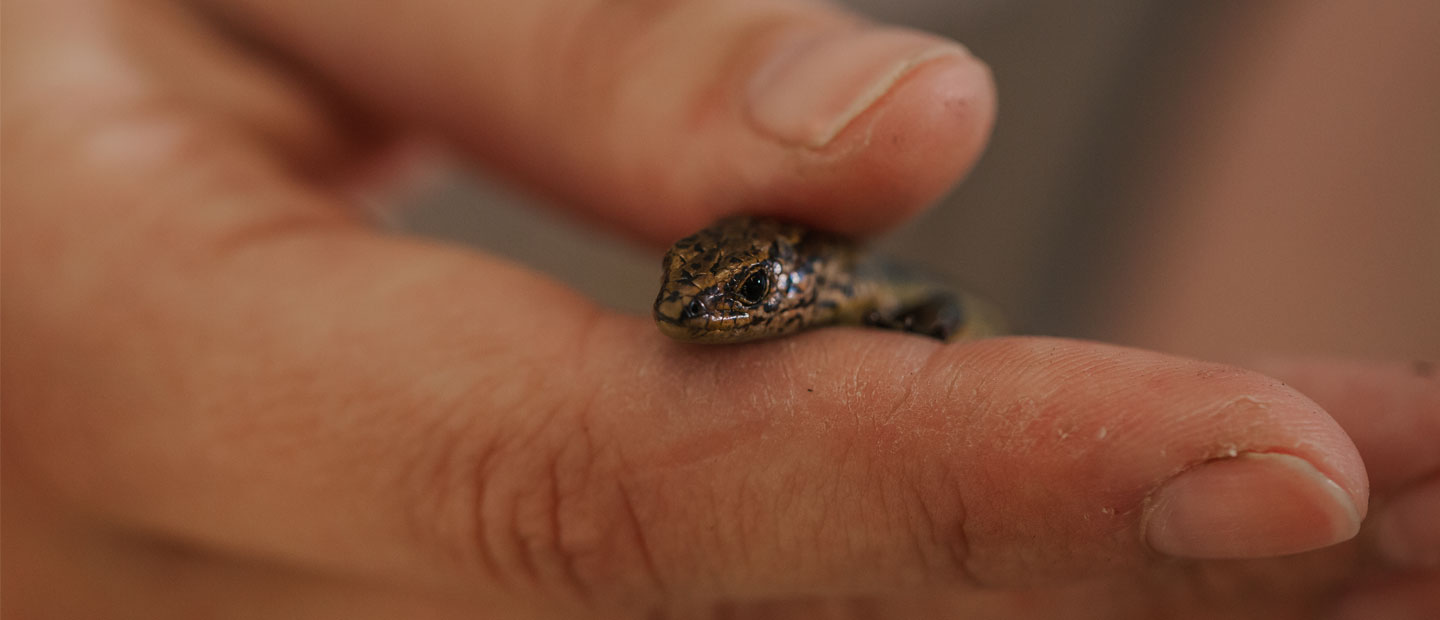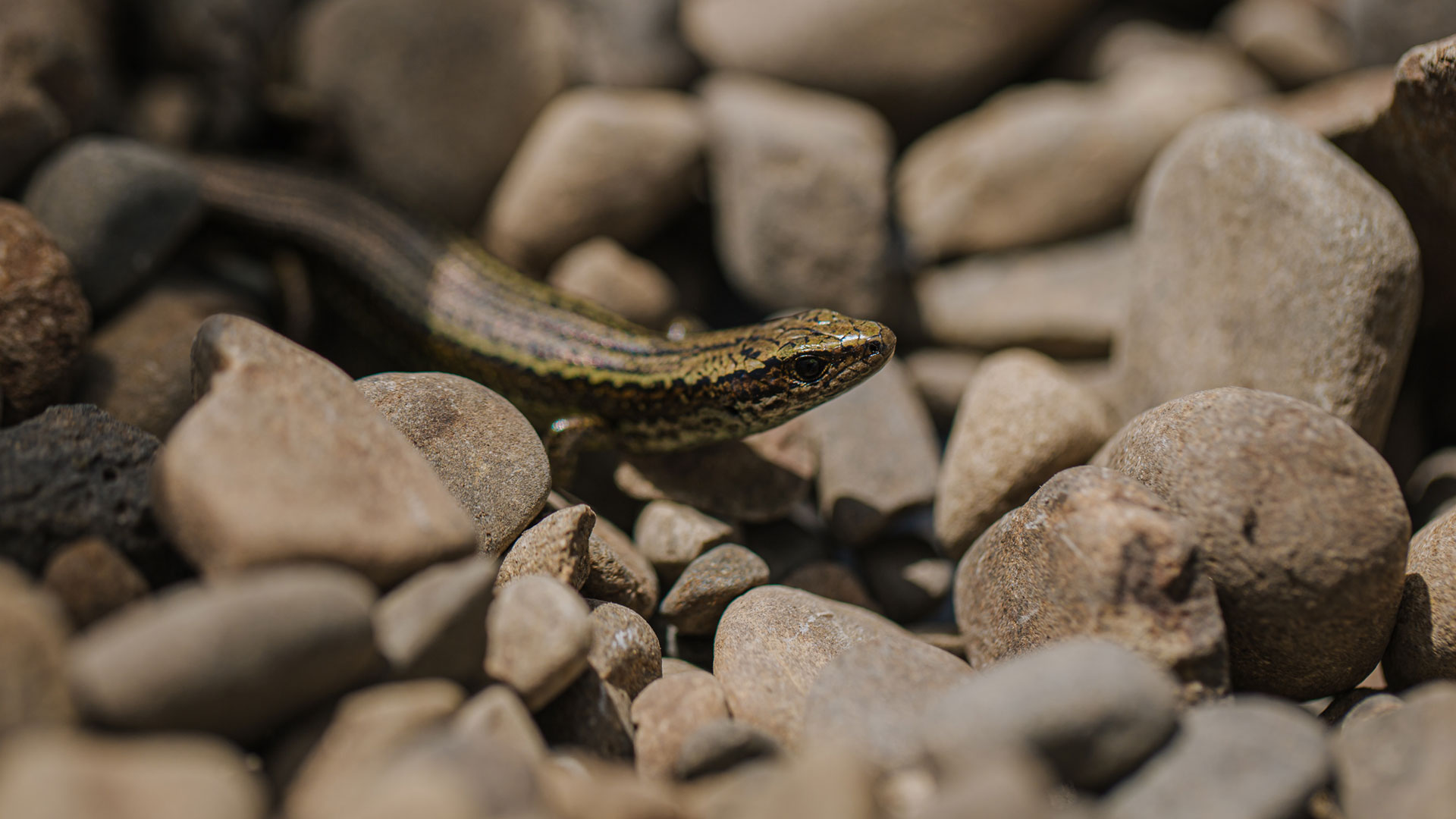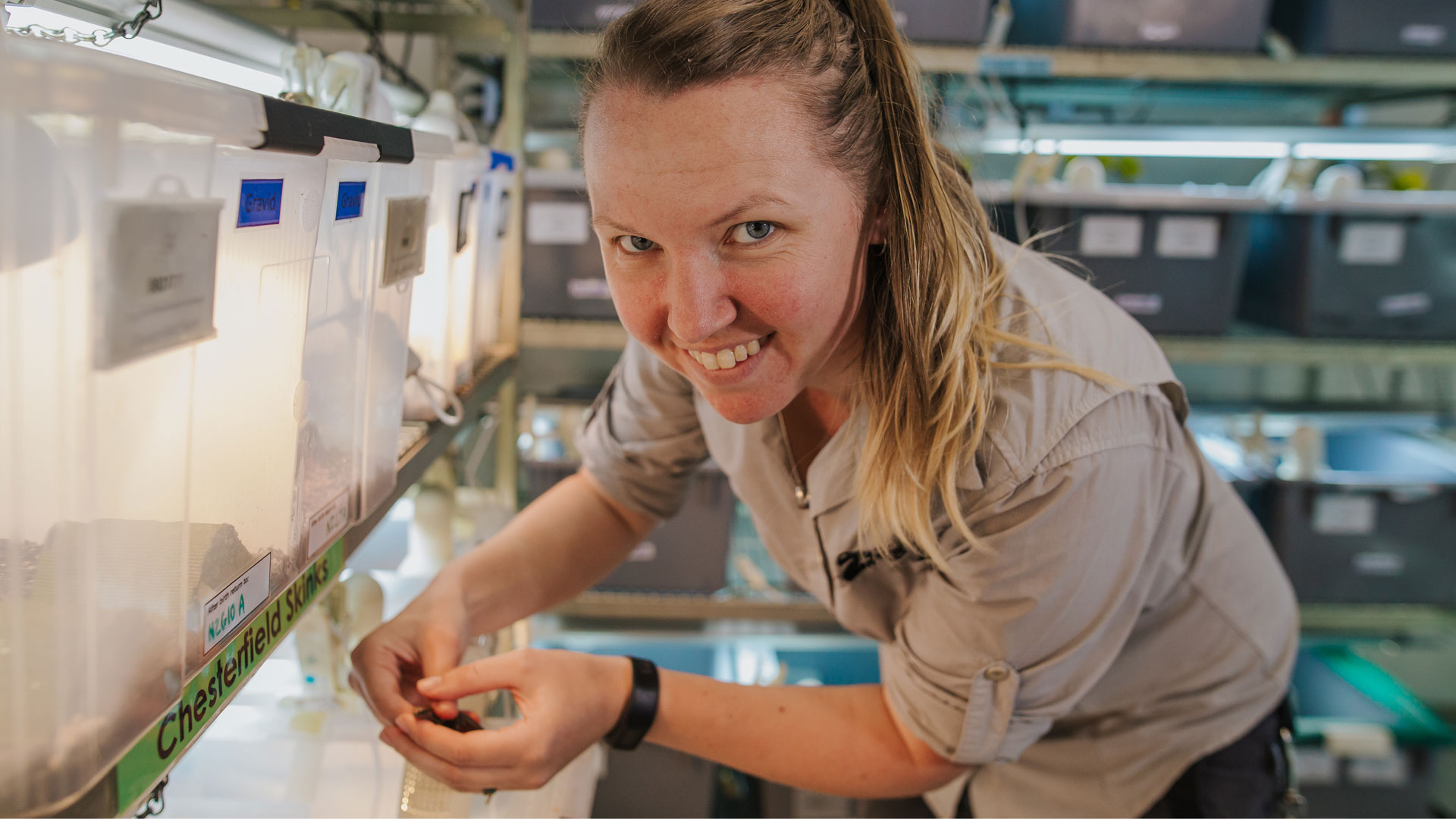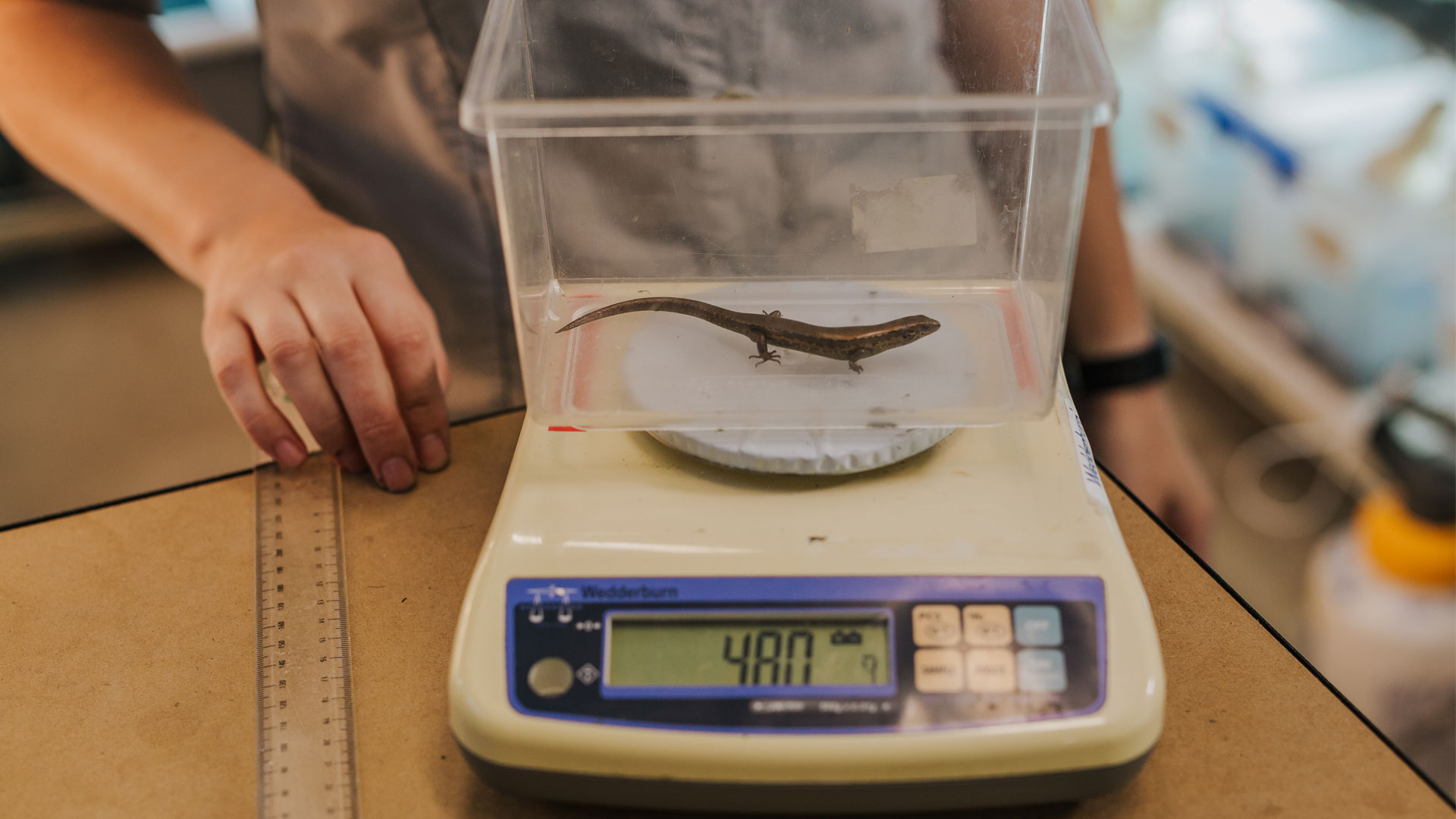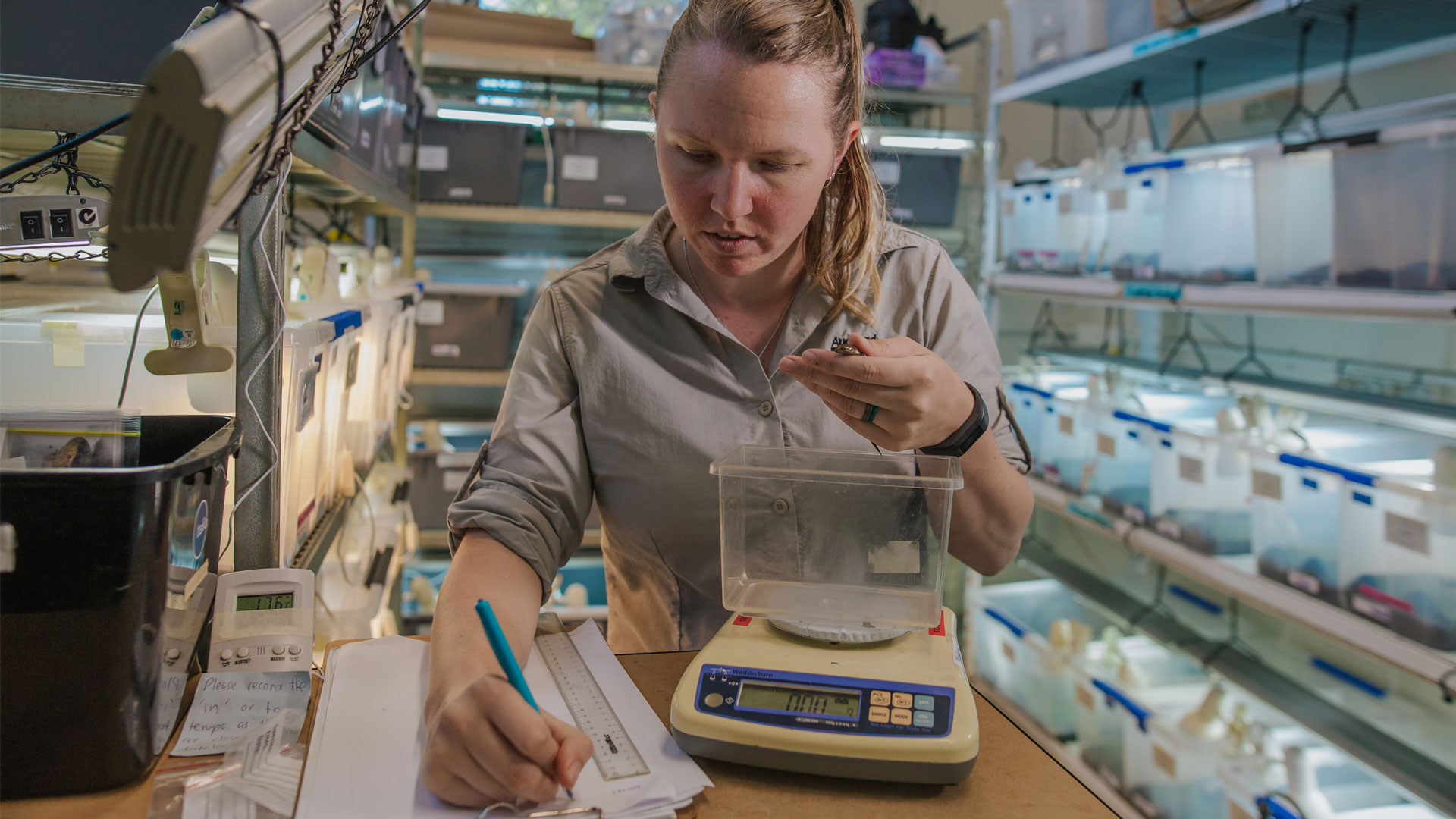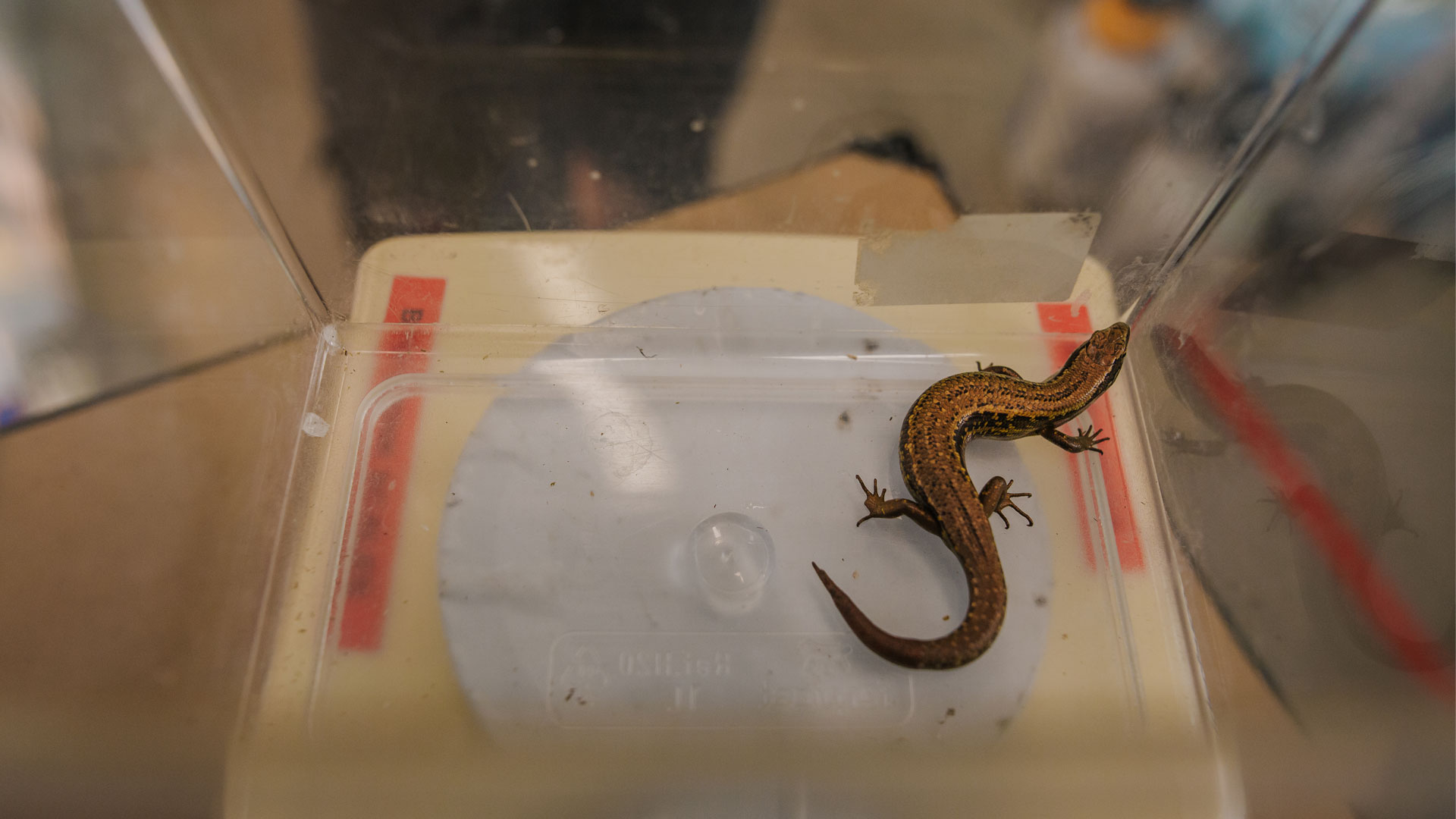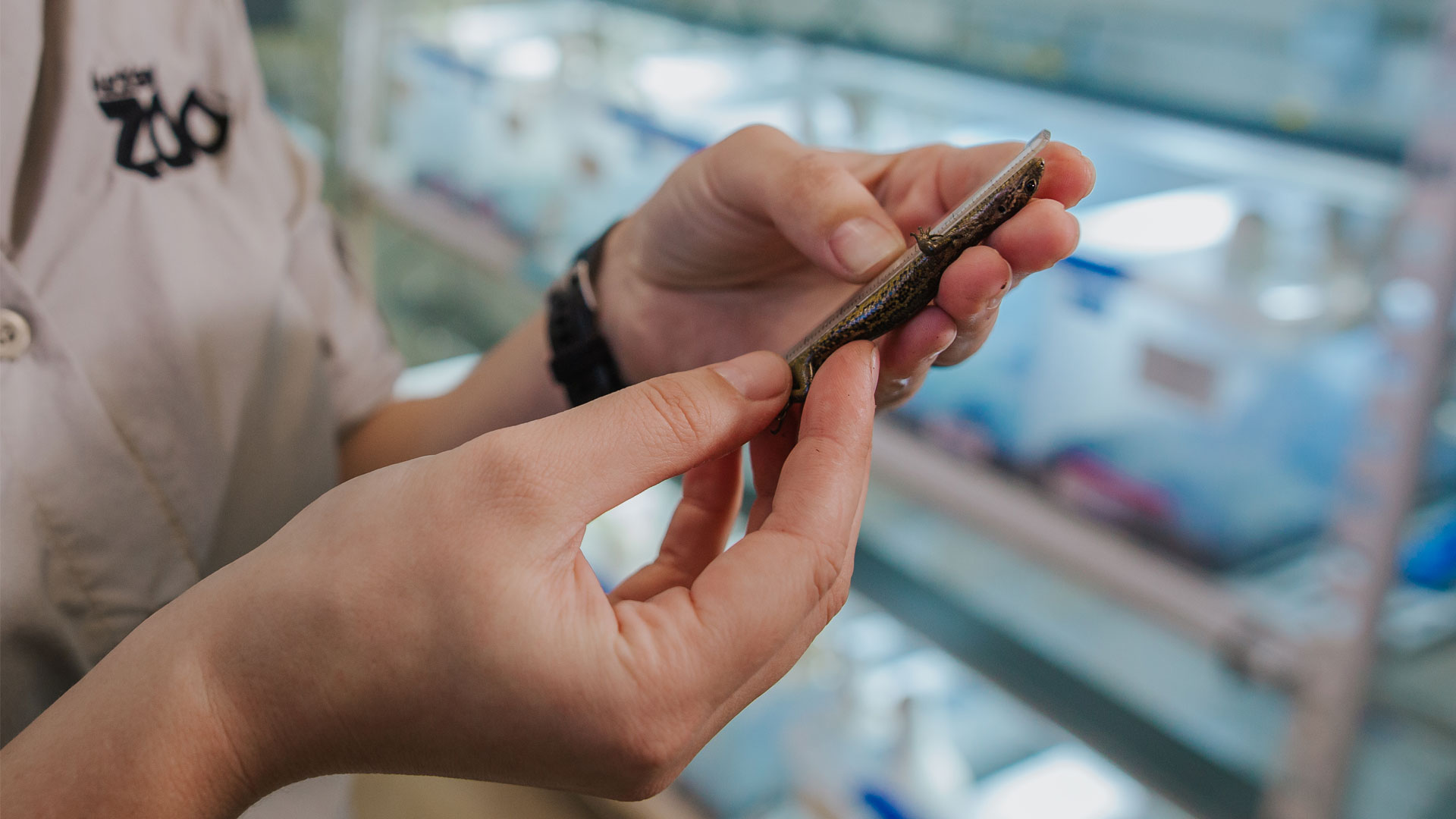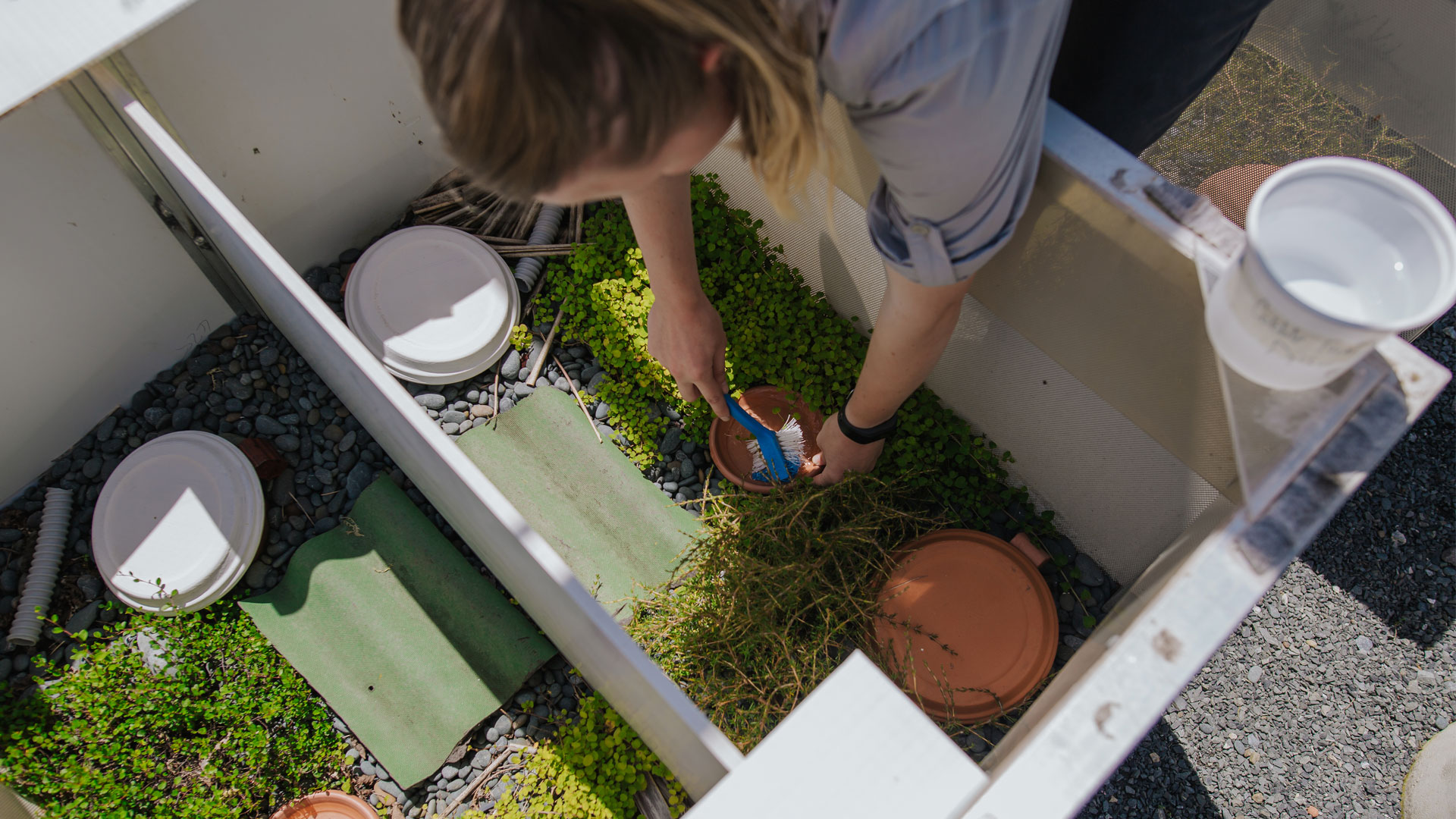In two special climate-controlled locations at Auckland Zoo, tucked away from our visitor-facing areas, we’re currently caring for the world’s entire population of cobble skinks as well as what is thought to be about a quarter of the population of Kapitia (Chesterfield) skinks. Luckily for these skinks, our conservation partners at the Department of Conservation were able to carefully collect a small number of each species and bring them to our Zoo for safeguarding just before separate cyclones destroyed most, if not all, of their only known habitats!
Looking after rare species about which so little is known takes a lot of careful observation and expertise. Adapted to West Coast conditions, special attention is given to their climate and diet, with pairs of skinks carefully assessed and introduced for breeding. We’re pleased to say their numbers have increased while they’ve been at the Zoo which is a testament to the excellent care they’re receiving. We’re working with DOC to return both species to protected habitats close to their original wild locations as soon as the two specially built facilities are completed.


